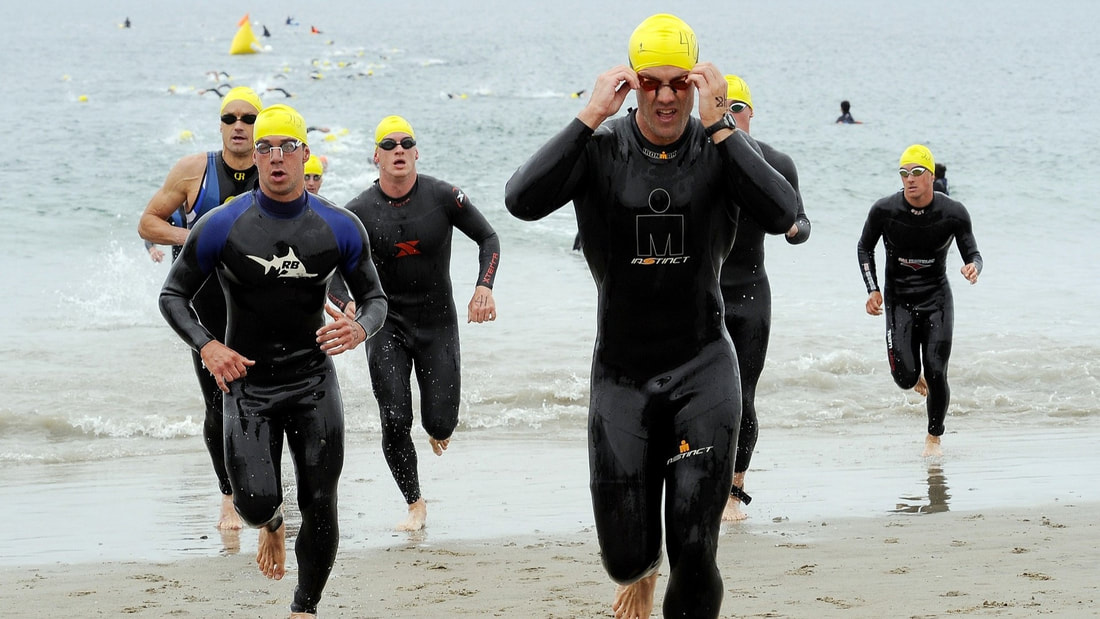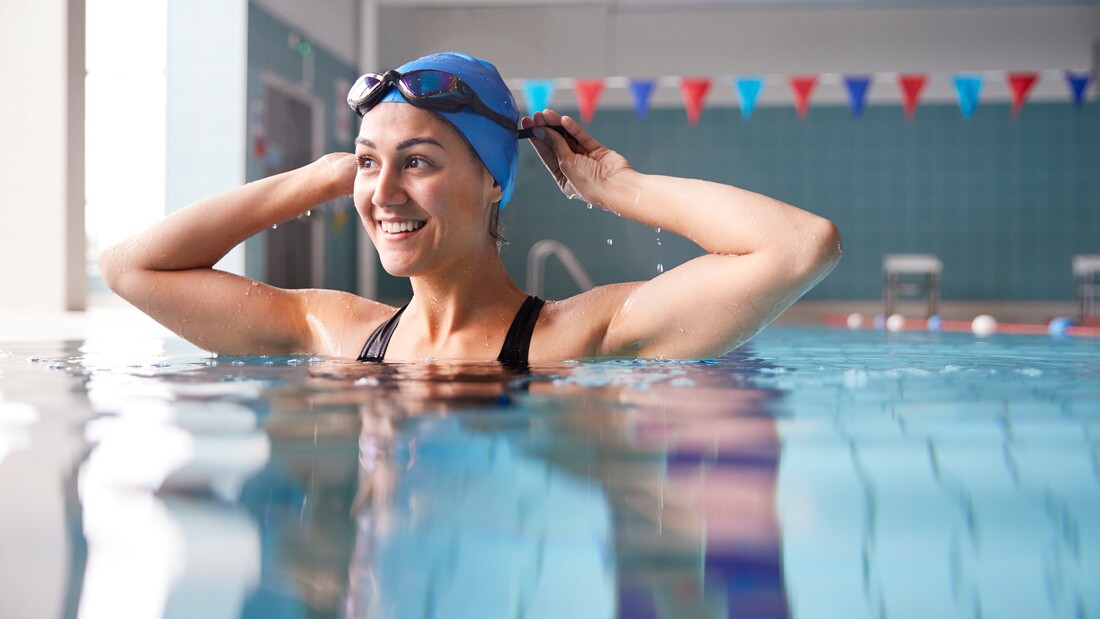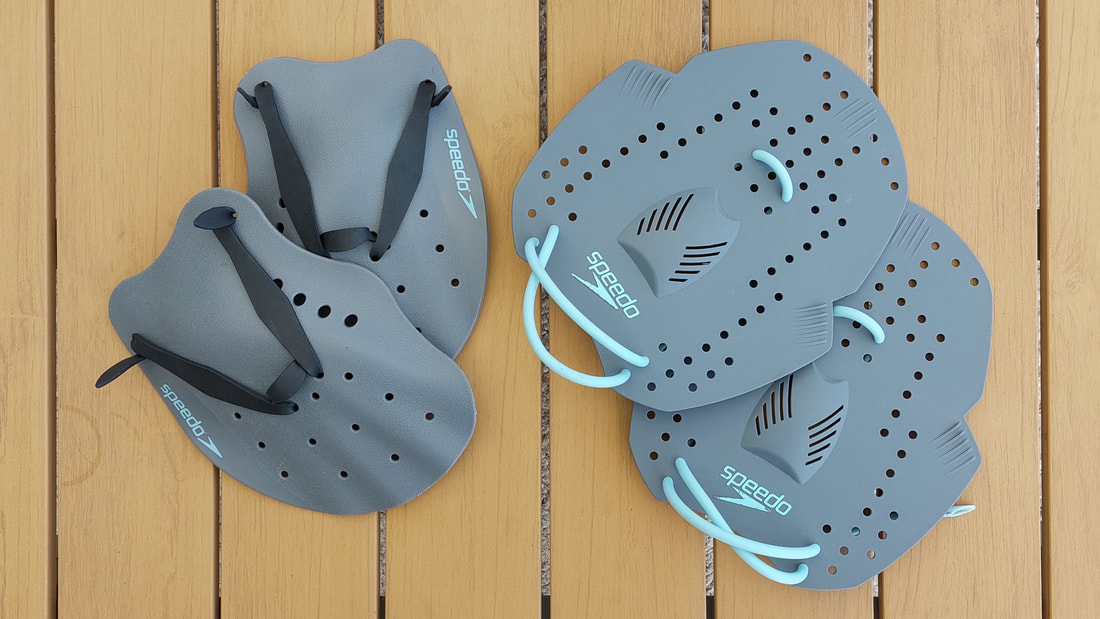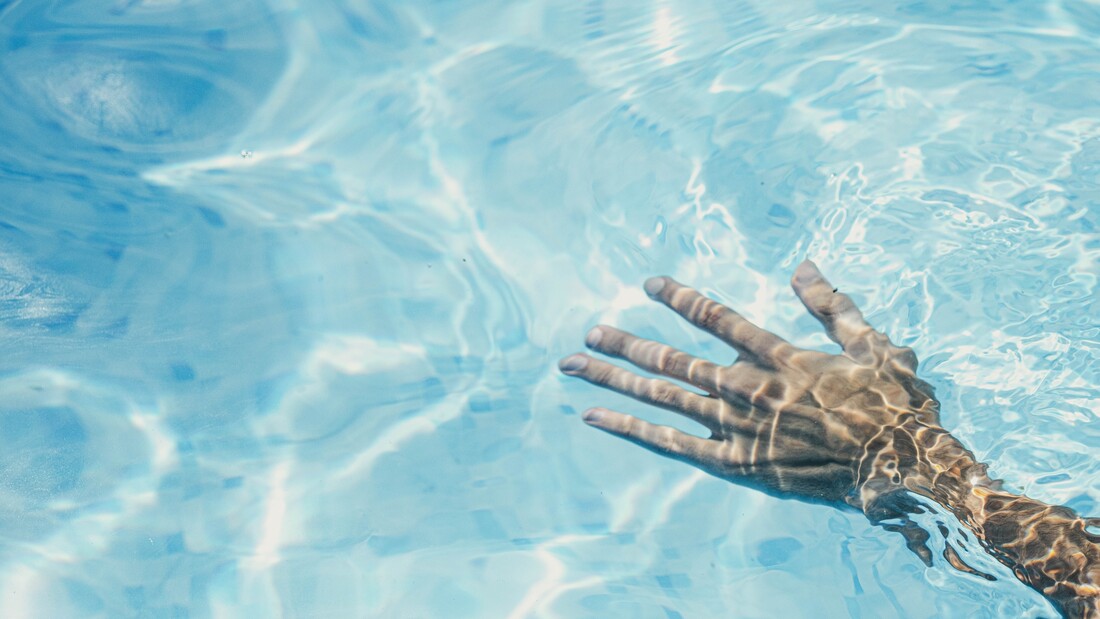|
In the world of fitness, swimming often takes a backseat to other forms of exercise like running or weightlifting when it comes to burning fat. However, this aquatic exercise offers a multitude of benefits that make it a powerful contender in the fight against fat accumulation. The science behind swimming shows how this form of exercise helps burn fat, metabolizes fat, and such science has paved the way to show the best forms of swim training to maximize fat-burning potential.
Swimming is not just a refreshing recreational activity but also a powerful tool for fat burning and overall fitness. As a full-body workout, it engages multiple muscle groups, elevates the heart rate, and incinerates calories effectively. Whether you're a beginner taking lessons or a competitive triathlete, understanding the interaction between swimming and fat burning can propel you toward a healthier, leaner physique. Your Strictly Swimming London coach can help you achieve that slender body. Understanding Fat Burning and Metabolism Before delving into the specifics of how swimming aids in fat burning, it's useful to grasp the basic concepts of fat metabolism. The body primarily relies on two sources of energy: carbohydrates and fats. During moderate-intensity activities, the body initially uses carbohydrates for energy due to their quick availability. However, as the intensity and duration of exercise increase, the body gradually shifts to using fats as the primary energy source. Lipolysis: This process involves the breakdown of triglycerides (the storage form of fats) into fatty acids and glycerol. These fatty acids are then released into the bloodstream to be utilized as fuel by various tissues, including muscles, during exercise. Beta-Oxidation: Once in the muscles, fatty acids undergo beta-oxidation, a metabolic pathway that breaks down these fatty acids further to produce adenosine triphosphate (ATP), the body's primary energy currency. EPOC (Excess Post-Exercise Oxygen Consumption): After exercise, the body's oxygen consumption remains elevated as it works to restore various physiological processes to their pre-exercise states. This phase requires energy, and a significant portion of this energy comes from fat oxidation. Swimming significantly influences metabolism by increasing the body's energy expenditure. As you swim, your muscles work harder against water resistance, prompting a higher metabolic rate. This, in turn, enhances fat metabolism as the body utilizes stored fats for energy, contributing to weight loss and improved overall metabolic health over time. Additionally, the post-swim period involves an elevated metabolic rate as the body works to recover, repair tissues, and restore balance, further enhancing the long-term benefits of swimming on metabolism. Swimming and Fat Burning Swimming, being a full-body workout, engages multiple muscle groups simultaneously. The water's resistance amplifies the effort required, making swimming an excellent aerobic exercise. This resistance helps build muscle strength, enhances cardiovascular conditioning, and amplifies the overall calorie burn during a swim, making it an efficient and effective fat-burning exercise. Let's explore how swimming facilitates fat burning:
Adults tend to burn more fat when swimming due to their higher muscle mass compared to children or adolescents. Muscle tissue requires more energy, and as adults engage a larger proportion of their muscle mass during swimming, it results in increased fat oxidation to meet the heightened energy demand. Additionally, adults typically engage in longer and more sustained swimming sessions, allowing them to tap into fat stores for a more extended duration, further facilitating fat loss. Triathletes often excel at burning fat during swimming due to their rigorous training routines. Their high level of cardiovascular fitness enables them to sustain longer and more intense swimming sessions, promoting fat oxidation as a primary energy source. Moreover, the cross-training nature of triathlons ensures that these athletes engage in various workouts, including swimming, which enhances their overall metabolic efficiency, aiding in fat burning throughout the entire race. Optimizing Swimming Training for Fat Burning While swimming inherently offers fat-burning benefits, structuring your training routine or lessons effectively can maximize its potential. Here are some strategies to consider:
Conclusion Swimming is a versatile and effective exercise for burning fat and promoting overall fitness. Its ability to engage multiple muscle groups, elevate heart rate, and provide a low-impact workout makes it an attractive option for individuals seeking to shed excess fat. Through processes like lipolysis, beta-oxidation, and EPOC, swimming kick starts the body's mechanisms to utilize stored fat as a source of energy. By structuring your swimming training to include interval training, endurance sessions, variety, and consistency, you can unlock its full potential for fat burning. So, the next time you dive into the pool or take your lessons, know that you're not only enjoying the water but also engaging in a powerful fat-burning workout that benefits both body and mind. At Strictly Swimming London, we can incorporate or even totally focus on fat burning workouts during your lessons. In the world of sport and fitness, swimming, running, and cycling are three of the most popular cardiovascular exercises. Each activity has its own set of benefits and appeals to different individuals based on their goals, preferences, and physical conditions. All three sports can help you become healthier and fitter, however amongst these disciplines, swimming often stands out as the ultimate winner. It not only improves your heart and lung health but also has some unique benefits that make it different from running and cycling. All three of these activities work your muscles and make your heart stronger, but swimming has a special advantage because of the water's resistance and buoyancy. Swimming is good for your joints, gives your whole body a workout, and can help you relax mentally. These are benefits that running and cycling can offer but not to the same level as swimming. So, if you're looking for a lesson or exercise that's gentle on your joints, gives you a full-body workout, and helps you relax, please contact Strictly Swimming London and book a lesson and let us teach you on why swimming is a great choice for staying healthy. 1. Low-Impact Exercise: One of the standout advantages of swimming is its low-impact nature. When you swim, the buoyancy of the water reduces the stress on your joints, making it an ideal exercise for people of all ages and fitness levels, including those with joint issues or injuries. Running and cycling, while effective forms of exercise, can take a toll on the joints over time due to the repetitive impact. Swimming allows for a challenging cardiovascular workout without the risk of joint strain. Swimming stands out as a remarkably low-impact exercise that brings a wealth of benefits to the body, particularly to the joints and other crucial areas. Unlike high-impact activities such as running or even certain forms of weightlifting, swimming involves moving through water, which provides a cushioning effect that significantly reduces the stress on joints and bones. The buoyant nature of water is a key factor that contributes to the low-impact nature of swimming. When you're submerged in water, your body weight is supported, leading to decreased pressure on joints like the knees, hips, and ankles. This buoyancy not only lessens the risk of impact-related injuries but also allows individuals with joint conditions or those recovering from injuries to engage in exercise without exacerbating their discomfort. Moreover, swimming's fluid movements work in harmony with the body's natural range of motion. The water's resistance provides a gentle yet effective workout, engaging muscles without straining joints. This makes swimming an ideal choice for people seeking a cardiovascular exercise that enhances muscle strength while minimizing wear and tear on the body's framework. In addition to its joint-friendly attributes, swimming offers an overall workout that promotes balanced muscle development. The various strokes and movements required during swimming engage muscles from head to toe, encouraging overall body strength without placing undue stress on any single area. This comprehensive workout not only helps in muscle toning but also supports joint stability by ensuring that surrounding muscles adequately support them. Many people move from running to triathlon to try and get the balance of low impact sports in their weekly workouts. For those recovering from injuries or individuals with conditions like arthritis, swimming can serve as a valuable rehabilitation tool. The controlled environment of the water allows for gradual progression in intensity and range of motion, enabling individuals to regain strength and mobility while minimizing the risk of setbacks. 2. Full-Body Engagement: Swimming stands out for its ability to engage multiple muscle groups simultaneously. The resistance provided by water forces your body to work against it, resulting in a comprehensive full-body workout. In contrast, running primarily targets the lower body muscles, and cycling focuses predominantly on the legs. Swimming's various strokes, such as freestyle, backstroke, breaststroke, and butterfly, engage the arms, legs, core, and back, leading to balanced muscle development and improved overall strength. Swimming stands as an exceptional workout that engages and develops all major muscle groups in the body. As you glide through the water, the resistance it offers requires your muscles to work against it, leading to a comprehensive full-body workout. Different swimming strokes target specific muscle groups, ensuring a balanced approach to muscle development. Strokes like freestyle involve the arms, shoulders, chest, and back, sculpting the upper body. Breaststroke engages the chest, shoulders, triceps, and thighs. Butterfly challenges the core, back, shoulders, and legs, enhancing both strength and coordination. Backstroke strengthens the upper back, shoulders, and arms. Additionally, the water's resistance aids in toning muscles without placing excess strain on joints. Whether you're an occasional swimmer or a dedicated enthusiast, swimming's ability to target every muscle group makes it a versatile and effective way to achieve a well-rounded and balanced physique. 3. Cardiovascular Fitness: All three activities – swimming, running, and cycling – contribute to cardiovascular fitness by increasing heart rate and improving circulation. However, swimming has a unique advantage when it comes to breath control. Coordinating your breathing with your strokes enhances lung capacity and strengthens the cardiovascular system. This controlled breathing aspect adds an extra layer of benefits to swimming that sets it apart from running and cycling. 4. Calorie Burn and Weight Management: Swimming is a calorie-burning powerhouse. The resistance of the water requires more effort, resulting in higher energy expenditure. Moreover, the body's natural response to the cooling effect of water involves burning extra calories to maintain its core temperature. Running and cycling also burn calories effectively, but swimming's combination of resistance and temperature dynamics provides a distinctive advantage in calorie consumption and weight management. 5. Joint Flexibility and Range of Motion: The fluid movements of swimming promote joint flexibility and a wider range of motion. The stretching and reaching involved in swimming strokes help improve flexibility in the shoulders, hips, and spine. Running and cycling, though beneficial, lack the same level of joint flexibility enhancement due to their repetitive nature. Swimming is particularly valuable for those seeking to maintain or improve joint health while staying active. 6. Low Heat Impact: Swimming offers a refreshing reprieve from high-impact activities in warm weather. The water's cooling effect minimizes the risk of overheating during intense workouts. Running and cycling in hot conditions can lead to heat-related issues, making swimming a safer and more comfortable option when the sun is blazing. 7. Stress Relief and Mental Well-being: While all three activities trigger the release of endorphins – the body's natural "feel-good" chemicals – swimming provides an additional mental health advantage. The sensation of being in water has a calming effect, reducing stress and anxiety levels. The rhythmic and repetitive nature of swimming strokes can induce a meditative state, contributing to enhanced mental well-being and relaxation. 8. Rehabilitation and Injury Prevention: Swimming is often recommended for rehabilitation purposes due to its low-impact nature. It is gentle on injuries and can aid in recovery from conditions such as sprains, strains, and stress fractures. Additionally, swimming helps prevent injuries by strengthening muscles and improving joint stability. Running and cycling, while excellent forms of exercise, can sometimes exacerbate existing injuries or lead to new ones due to their impact on joints. We can tailor your lessons to reduce impact on your joints within your swimming strokes. Conclusion: Swimming, running, and cycling all have their merits and cater to different fitness goals. However, swimming emerges as a clear winner when considering its low-impact benefits, full-body engagement, cardiovascular advantages, joint flexibility improvements, and mental well-being enhancements. While running and cycling have their place in a well-rounded fitness routine, individuals seeking a workout that prioritizes joint health, muscle balance, and mental relaxation will find swimming to be an optimal and rewarding exercise choice. As always, consulting with a healthcare professional before embarking on a new exercise regimen is recommended to ensure it aligns with individual health conditions and goals, and we can monitor your swim Many of our Strictly Swimming London clients entering into our triathlon swim programme and lessons have seen the benefits of swimming on their overall fitness, see please contact us on info@strictly-swimming,com to book a lesson. Learning to swim is not only a valuable life skill but also an enjoyable and beneficial activity for people of all ages. However, there are several obstacles that adults often encounter while embarking on their swimming journey. These obstacles can range from physical and psychological challenges to environmental factors that impede progress. 1. Fear and Anxiety: One of the most significant obstacles in learning to swim is fear and anxiety. Many adults experience a natural apprehension when first entering the water, especially if they have had previous negative experiences as a child or lacked exposure to swimming. Fear of water, also known as aquaphobia, can be a significant barrier to learning, as it triggers a strong emotional response that hinders progress. Strategies to overcome fear and anxiety:
2. Lack of Confidence: A lack of confidence can hinder progress in learning to swim. Individuals and adults who doubt their abilities or have a fear of failure may struggle to overcome obstacles and take risks necessary for skill development. This lack of confidence often stems from self-imposed pressure or comparison to others. Strategies to boost confidence:
3. Water Discomfort and Buoyancy: Water discomfort and understanding buoyancy can be significant obstacles for beginners. The sensation of water on the skin, the resistance it creates, and the unfamiliarity of being buoyant can cause discomfort and unease. Strategies to overcome water discomfort and understand buoyancy:
4. Learning Coordination and Technique: Learning the coordination and technique required for swimming can be challenging, particularly for those new to the sport. Coordinating arm and leg movements, breathing rhythmically, and maintaining proper body alignment require practice and focus. Strategies to improve coordination and technique:
5. Environmental Factors: Environmental factors such as crowded pools, strong currents, or deep water can pose additional challenges for beginners. Even as an adult, navigating these environments while learning to swim can create anxiety and disrupt the learning process. Strategies to overcome environmental challenges:
Learning to swim as an adult can be a transformative and empowering experience, but it is not without obstacles. Overcoming fear and anxiety, building confidence, understanding water discomfort and buoyancy, mastering coordination, and technique, and navigating environmental challenges are essential steps on the path to becoming a proficient swimmer. By embracing patience, persistence, and a positive mindset, individuals can overcome these obstacles, ultimately building confidence, skill, and enjoyment in the water. Remember, the journey to becoming a confident swimmer is as rewarding as the destination itself. Our Strictly Swimming London coaches can tailor your adult swimming lessons to develop relaxation in the water and overcome your fears with practice. Swimming is a highly technical sport that requires precise movements and efficient propulsion through the water. To enhance performance and build strength, swimmers often incorporate various training aids into their workouts. Hand paddles are one such tool that has gained popularity among swimmers of all levels. But how can you effectively incorporate them into your swimming training routine. These specialized paddles, typically made of plastic or fiberglass, are worn on the hands and increase resistance as swimmers pull through the water, thereby providing a challenging workout. Hand paddles come in various shapes and sizes, catering to swimmers of different skill levels and training objectives. The primary purpose of using hand paddles is to improve stroke mechanics. By amplifying the surface area of the hand, paddles encourage a more powerful catch and pull phase during the swim stroke. This increased resistance forces swimmers to engage more muscles, particularly the shoulders, back, and core, leading to improved strength and endurance over time. Additionally, hand paddles promote a heightened awareness of hand positioning and water feel, allowing swimmers to develop a more efficient and streamlined stroke technique. Hand paddles are versatile training aids suitable for swimmers of all levels, from beginners to competitive triathletes. Novice swimmers can benefit from using smaller-sized paddles to develop proper stroke mechanics and build strength gradually. Intermediate and advanced swimmers often utilize larger paddles to further enhance their stroke power and refine their technique. However, it's essential to exercise caution when incorporating hand paddles into training. Overuse or improper usage can lead to strain or injury, particularly in the shoulders and wrists. It is recommended to start with shorter distances and gradually increase intensity and duration as the swimmer adapts to the paddles. At Strictly Swimming London, we encourage our clients and triathletes to purchase some hand paddles, as we can incorporate them into your lessons. Benefits of Hand Paddles
Using Hand Paddles Effectively
In conclusion, hand paddles are a valuable tool in swim training, offering swimmers the opportunity to refine their technique, build strength, and enhance performance in the water. By incorporating hand paddles appropriately and progressively, swimmers can unlock their full potential and make significant strides toward their swimming goals. As always, please feel free to discuss these techniques with your Strictly Swimming London coach during your lessons. Swimming technique plays a crucial role in a swimmer's performance and injury prevention. One aspect that has sparked debate among swimmers and coaches is whether to swim with open fingers or closed fingers. Swimming is a sport that requires precision and technique to excel in the water. Among the various aspects of swimming technique, the debate between open finger swimming and closed finger swimming has long been a topic of discussion. Open finger swimming involves keeping the fingers relaxed and slightly apart during the stroke, while closed finger swimming requires tightly clenching the fingers together. Both techniques have their proponents and claimed benefits, leading to a fascinating debate in the swimming community. Whether you are training for a triathlon or swimming to gain fitness, we can tailor your Strictly Swimming London lesson to develop the best hand position for you. Open Finger Swimming Swimming with open fingers, also known as "relaxed" or "loose" hand technique, involves keeping the fingers slightly apart during the stroke. This technique allows for a more relaxed and natural movement of the hand through the water, reducing fatigue and the risk of injury. One advantage of open finger swimming is the increased range of motion in the hand, wrist, and forearm, leading to greater power and propulsion. Additionally, open fingers can help prevent cramping, a common issue for swimmers using closed fingers. It is worth noting that "open finger swimming" refers to the fingers being slightly apart, not stretched wide apart. Closed Finger Swimming Closed finger swimming, also known as "tight" or "firm" hand technique, involves keeping the fingers tightly clenched during the stroke. This technique is often debated, with some swimmers believing it provides more power and control in the water. Closed fingers create a streamlined hand position, reducing drag and increasing speed and efficiency. The technique can also improve grip for sudden turns or maneuvers. Benefits of Open Finger Swimming
Benefits of Closed Finger Swimming
A study published in the Journal of Sports Science and Medicine compared elite swimmers using both open and closed finger techniques. The study found that closed-finger technique resulted in greater peak force and propulsion, while open-finger technique resulted in less finger muscle activity and more activity in the upper arm and shoulder, potentially reducing fatigue and injury. Another study in the Journal of Applied Biomechanics found that closed-finger technique produced greater peak force but also higher muscle fatigue. The study observed increased muscle activation in the fingers but also in the upper arm and shoulder. A 2020 study in the Journal of Sports Science and Medicine found that open-finger technique resulted in greater power output and stroke rate compared to closed-finger technique. However, closed-finger technique led to greater finger muscle activity, potentially enhancing muscle endurance over time. In conclusion, the choice between open and closed fingers in swimming is highly individual and depends on the swimmer's goals, experience, and physical abilities. Open fingers may be less fatiguing and less prone to injury, while closed fingers may provide more power and control. However, scientific evidence is limited, and swimmers should experiment with both techniques to find what feels most comfortable and effective for them. A combination of a slightly closed finger with a relaxed technique of open fingers may also be an option worth considering. Please feel free to discuss these techniques with your Strictly Swimming London coach during your lessons. |
AUTHORPaul started competing in swimming from the age of 8 and eventually went on to represent his country all over the world. During his time at University, Paul specialised in Aquatics and the Biomechanics of Swimming and produced numerous theses on swimming performance. TOPICS
All
ARCHIVES
June 2024
|
Let's connect!
Copyright © 2024 Strictly Swimming






